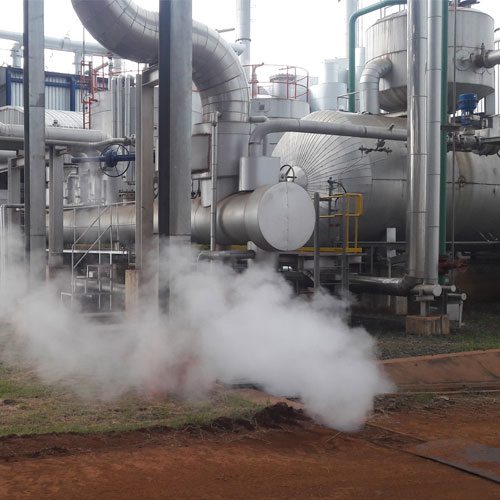RBI and Control of Major Accident Hazards (COMAH) inspections
RBI covers more than the basics of engineering risk. By managing all risks associated with the failure or break down of plant, equipment and electrical systems we can optimize outage periods, take workplace safety a step forward and create rewarding opportunities for any business.
The main aim of the COMAH regulations is to prevent and mitigate the effect of a major accident involving dangerous substances that could otherwise cause serious damage to people or harm the environment.
RBI
Zurich determines the scope and frequency of inspections based on the level of risk of failure of the plant. The process not only considers the health and safety risks but also the risks associated with business interruption, brand damage, market share, asset value plus repair and replacement costs.
The process includes developing a written scheme of examination that enables the output from RBI methodology to be put into practice.
Complying with health and safety legislation helps manage health and safety risks in the workplace but this does not necessarily mitigate the financial risk that a plant breakdown could cause. If a machine is out of action for an extended period then the costs could be significant.
A scheme of examination developed around the risks identified could reduce downtime and so contribute to greater efficiency and profitability. For example, infrequently used equipment could lead to the examination frequency being extended. The key benefits of applying a scheme of examination tailored to the risks include reduction in the risk of failure, reduction in lost production time and reduction in preparation and access costs.
RBI can be applied to all types of plant, including specific statutory plant and electrical systems.
COMAH
The main aim of COMAH regulations is to prevent and mitigate the effect of a major accident involving dangerous substances that could otherwise cause serious damage to people or harm the environment.
These regulations take risks to the environment just as seriously as risks to people. So the Competent Authority (CA) responsible for enforcing COMAH is made of both the Health and Safety Executive (HSE) and the relevant Environment Agency.
The CA has a duty to inspect COMAH sites and will prohibit the operation of a site if there is evidence that measures taken for prevention and mitigation of major accidents are deficient.
On 11 December 2005 a major conflagration was caused by a series of explosions at Buncefield in Hertfordshire. The incident not only registered 2.4 on the Richter scale it also caused serious rumblings at the HSE too.
It’s our opinion that since Buncefield the HSE has increased its focus of inspection of COMAH sites.

Online reporting
Access all your inspection activity whenever you need it, via Crimson, our online reporting tool.

Our accreditations
Useful inspection information
The term - 'Competent Person'
The Management of Health and Safety at Work Regulations 1999, (MHSWR) Regulation 7 (1) states that every employer shall, subject to paragraphs (6) and (7), appoint one or more competent persons to assist him in undertaking the measures he needs to take to comply with the requirements and prohibitions imposed upon him by or under the relevant statutory provisions and by Part II of the Fire Precautions (Workplace) Regulations The Provision and Use of Work Equipment Regulations 1998, (PUWER) Approved Code of practice (ACoP) states that ‘The competent person should have the necessary knowledge and experience'.
Zurich Engineering as a 'Competent Person/Body'
In order to comply with the approved codes of practice for the regulations under which plant and equipment is subject to periodic in-service inspections or thorough examinations, a Competent Person is likely to be a corporate body rather than an individual because of the necessary requirement to have access to a wide variety of technical expertise and specialist services such as non-destructive testing (NDT). One indication of competence is accreditation and certification. For inspection bodies, there are several indicators of competence and Zurich Engineering hold the following:
- UKAS accreditation - ISO17020 Type A inspection body.
- UKAS accreditation - ISO17065.
- Quality Management System Certification - BS EN ISO 9001.
- Trade Association (SAFed) membership.
- Compliance to SAFed Standard SS01 (assessed as part of Inspection Body accreditation).
Reporting status and defect code guide
Serious defects (AE)
This status indicates that a defect that poses (or could pose) a risk of injury to persons has been identified and that it must be reported to the enforcing authority. For most items, a defect that is required to be reported to the enforcing authority also poses an immediate or imminent danger to persons and the report will indicate this. For power presses, defects that need to be reported to the enforcing authority include those that do not pose immediate or imminent danger to persons. If the defect is not ‘immediate’, the report will indicate the date by which any rectification work should be undertaken.
Serious defects (AN)
This status indicates that a defect that poses (or could pose) a risk of injury to persons has been identified but that it does not require reporting to the enforcing authority. If there is immediate or imminent danger to persons, then the report will indicate this. If there is no immediate danger to persons, the report will indicate the latest date by which any rectification should be undertaken.
'B' defect (BD) or Other defect (in the case of power presses)
This status indicates that a defect has been identified but that, in the engineer surveyor's judgement, it does not pose a specific risk of injury to persons as defined in the respective regulations to which the item has been inspected. The defect should be assessed by the customer, as soon as reasonably practicable, and appropriate action taken if deemed necessary by the customer.
Deleted item (DL)
Indicates item has been removed from the schedule.
Not located (NL)
Indicates that an Engineer Surveyor has not been able inspect or thoroughly examine the item because the customer has not presented it for inspection or thorough examination and the engineer surveyor has been unable to locate or identify it.
Not available (NV)
Indicates that an item has been identified and located but we have not been able to complete an inspection or thorough examination because the item was not able to be inspected or thoroughly examined, e.g., out of service awaiting repair or not adequately prepared
OK
Indicates that an inspection took place and no defects were detected. However, the customer should view the reports for observations as these may provide useful information.
Customer advice (CA)
Indicates a Customer Advice, issued for important advice / informational purposes only.
Postponement (PD)
Indicates a Pressure item examination has been postponed in accordance with regulation 9(7) of the Pressure Systems Safety Regulations 2000 (PSSR)
General notes
We recommend that all reports of inspection and thorough examination are reviewed to ensure you are aware of the content.
Any item that has not been inspected by the due date on the current report of inspection or thorough examination should be taken out of service until the statutory inspection has taken place unless it has been postponed in accordance with regulation 9(7) of PSSR. Where defects have been identified and reported as requiring remedial action within a specified time, these should be rectified within the specified time period.
For all defects we recommend that the customer should review any relevant risk assessments and working procedures to ensure the continued safety of employees and other people that might be affected.
Managing statutory equipment can be difficult and needs tight control to avoid potential issues when equipment is used beyond its due inspection or thorough examination date. One way to control the use of equipment is to physically tag or “colour code” when it has been inspected or thoroughly examined and is safe to use.
Various types of colour coding can be used in different ways to distinguish when a piece of equipment is still safe to use and these options can be discussed with our teams
Whilst colour coding can be a cost-effective method of indicating the suitability of the equipment for further use, there are other options available for the control of equipment. Date stickers, date tags and rubberised tags are all potential options depending on the environment in which equipment is used, and Zurich Engineering are able to offer a number of options depending on your needs, so please speak to our teams to discuss.
More information

Engineering inspection
Find out about our other engineering inspection services, from lifting equipment to pressure systems

Engineering insurance
Zurich Insurance Company Ltd offer a wide range of engineering insurance covers for owned and hired-in plant and machinery

Engineering technical services
We provide a range of technical and certification services delivered from our state-of-the-art Engineering Technical Centre in the west midlands


